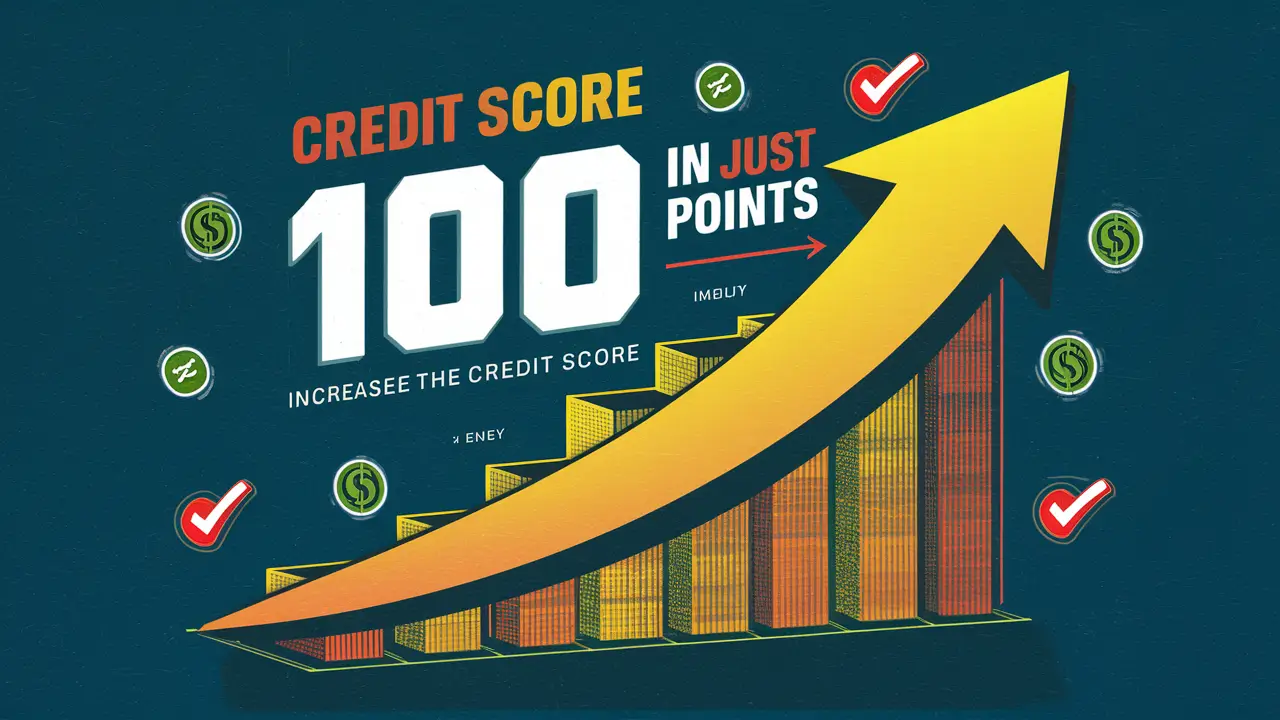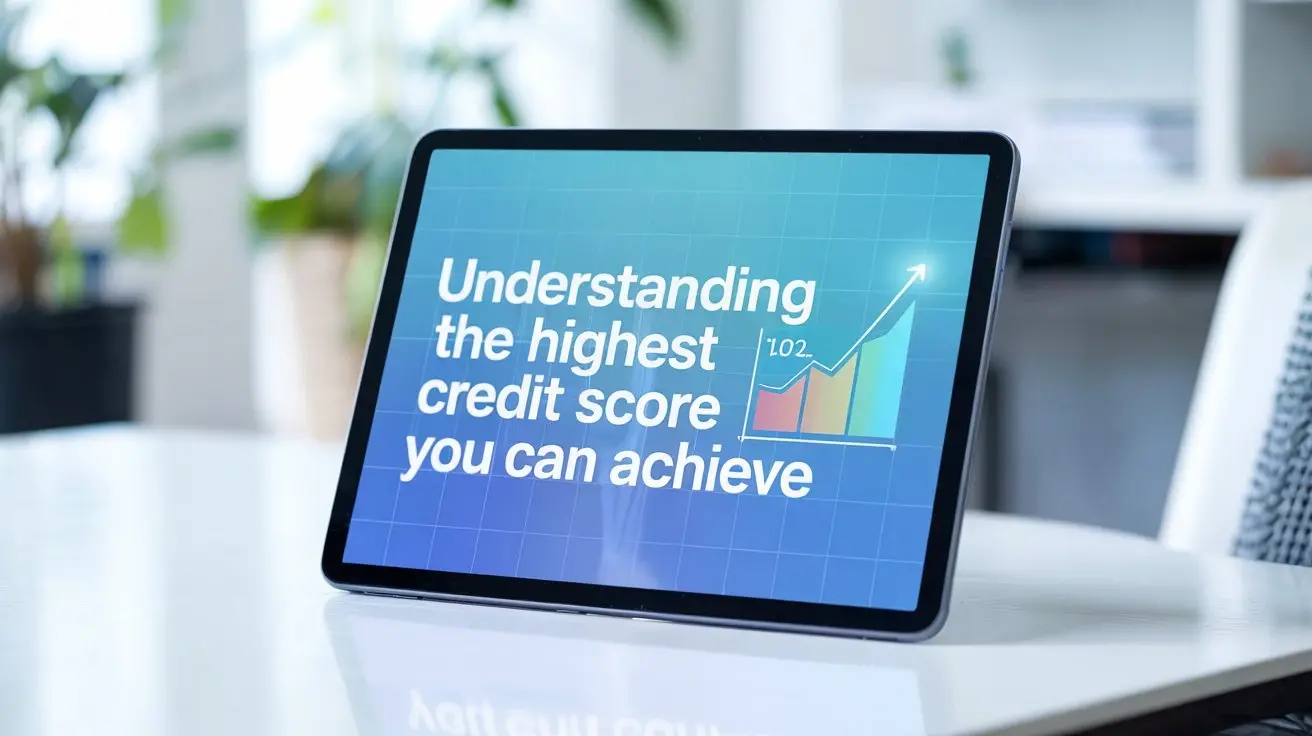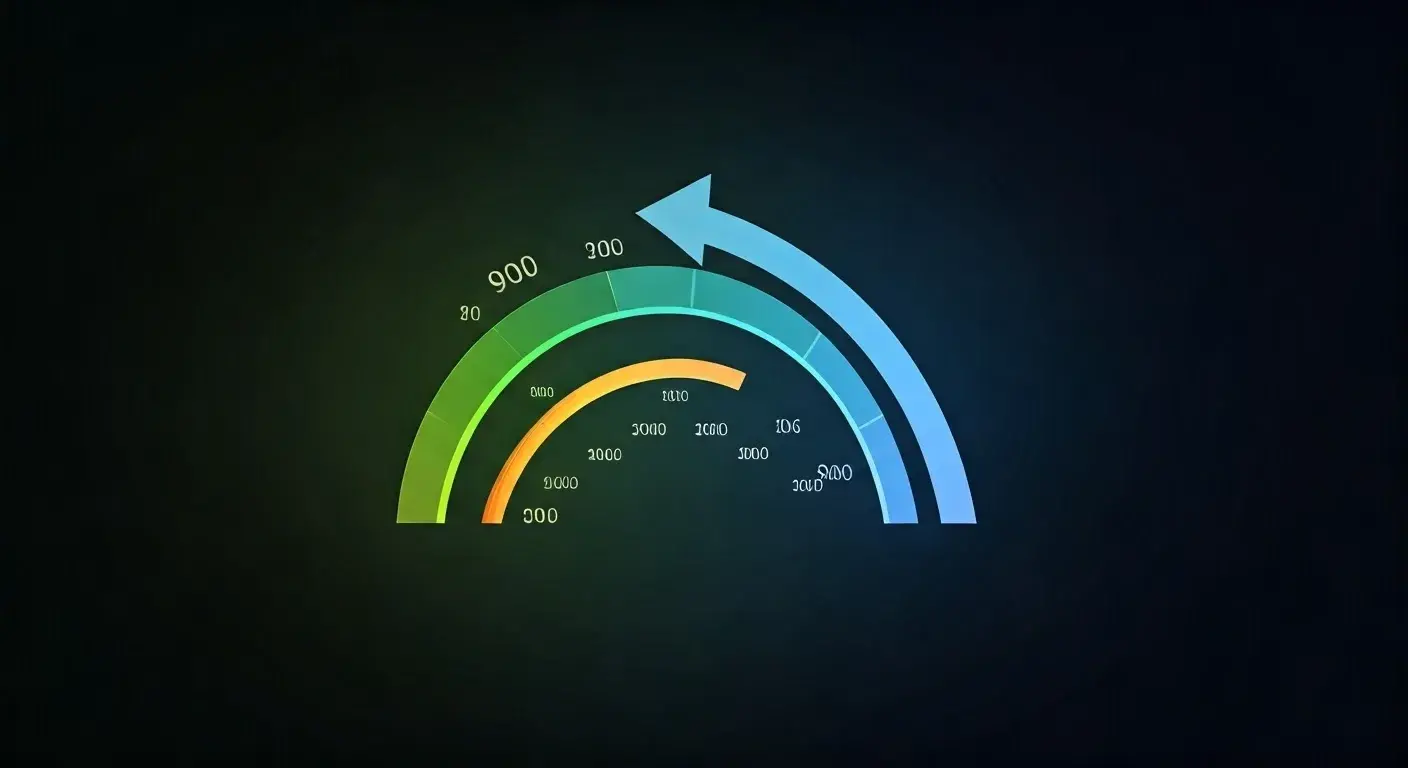-
Posted on: 24 Jul 2024

-
Can your credit score jump 100 points in a month? While a dramatic 100-point leap in just 30 days is rare, significant improvements are achievable with targeted strategies. This guide explores the possibilities, the factors involved, and actionable steps you can take to boost your creditworthiness rapidly.
Understanding Credit Scores and Their Impact
Your credit score is a three-digit number that lenders use to assess your creditworthiness – essentially, how likely you are to repay borrowed money. It's a critical component of your financial health, influencing everything from your ability to get a loan or mortgage to the interest rates you'll pay and even your insurance premiums. In 2025, a strong credit score remains paramount for financial success.
What is a Credit Score?
Credit scores are typically calculated by credit bureaus like Experian, Equifax, and TransUnion using information from your credit reports. The most common scoring model is the FICO score, but VantageScore is also widely used. These scores generally range from 300 to 850, with higher scores indicating lower risk to lenders.
Why Does Your Credit Score Matter in 2025?
In today's economic landscape, a good credit score is more important than ever. Lenders rely heavily on these scores to make lending decisions. A higher score can unlock:
- Lower interest rates on mortgages, auto loans, and personal loans, saving you thousands over the life of the loan.
- Easier approval for credit cards, including those with premium rewards and benefits.
- Better terms for renting an apartment or even securing a mobile phone contract.
- Potentially lower insurance premiums, as some insurers use credit-based insurance scores.
- The ability to qualify for larger loan amounts.
Conversely, a low credit score can lead to loan denials, high-interest rates, and difficulty accessing essential financial services. Understanding the mechanics of your credit score is the first step toward improving it.
The 100-Point Jump: Myth or Reality?
The question on many minds is: Can your credit score jump 100 points in a month? The straightforward answer is that while not impossible, it's highly improbable for most individuals. Credit scoring models are designed to reflect long-term financial behavior, not short-term fluctuations. However, significant improvements are definitely possible within a month, even if a full 100 points is an ambitious target.
Factors Affecting the Speed of Improvement
The potential for a rapid score increase depends heavily on your current credit situation. Someone with a very low score due to recent delinquencies might see a faster percentage increase than someone with an already good score trying to push it even higher. Here’s a breakdown:
- Starting Score: If your score is in the low 500s, a 100-point jump to the low 600s is more attainable than a 100-point jump from 750 to 850.
- Specific Issues on Your Report: Negative items like late payments, high credit utilization, or collections can significantly drag down your score. Addressing these can lead to quicker gains.
- Types of Actions Taken: Some actions, like paying down credit card balances, have an immediate impact, while others, like the age of your credit accounts, take time.
When a 100-Point Jump Might Be Possible (Though Rare)
In very specific circumstances, a substantial jump might occur. This often involves correcting errors on your credit report or making a significant, impactful change that directly addresses a major negative factor. For instance:
- Removing an Erroneous Negative Mark: If a significant error, like a collection account that doesn't belong to you, is removed from your report, your score could see a substantial boost.
- Paying Off a Large Collection Account: Settling a very old, significant collection account could lead to a notable score improvement, though the impact varies.
- Dramatic Reduction in Credit Utilization: If you have very high balances on your credit cards and can pay them down to very low levels (e.g., below 10% of the credit limit) very quickly, this can positively impact your score.
However, these are often one-off events or require significant financial resources. For sustained, healthy credit growth, a more consistent, long-term approach is necessary.
Key Factors Influencing Your Credit Score
Understanding the components of your credit score is crucial for knowing where to focus your efforts. The FICO scoring model, which is widely used, breaks down your score into several key categories. While the exact weighting can vary, these are the primary drivers:
1. Payment History (Approximately 35% of your score)
This is the most critical factor. Lenders want to see that you pay your bills on time, every time. Even a single late payment can have a significant negative impact, especially if it's more than 30 days past due.
- On-time payments: Consistently paying your bills by the due date is essential.
- Late payments: Payments 30, 60, or 90+ days late will severely damage your score.
- Collections: Accounts sent to a collection agency are highly detrimental.
- Public records: Bankruptcies, liens, and judgments have a severe, long-lasting negative effect.
2025 Insight: Lenders are increasingly sophisticated in analyzing payment patterns. Consistent on-time payments are the bedrock of a good score.
2. Amounts Owed (Credit Utilization Ratio - Approximately 30% of your score)
This refers to how much of your available credit you are using. It's calculated by dividing the total balance on your revolving credit accounts (like credit cards) by your total credit limit. A lower credit utilization ratio is better.
- High utilization: Using a large percentage of your available credit can signal to lenders that you are overextended and may be a higher risk.
- Keeping utilization low: Aim to keep your credit utilization below 30%, and ideally below 10%, on each card and overall.
Example: If you have a credit card with a $10,000 limit and a balance of $5,000, your utilization is 50%. If you pay it down to $1,000, your utilization drops to 10%.
2025 Insight: The credit utilization ratio is one of the most actionable factors for rapid improvement. Paying down balances can directly and quickly impact your score.
3. Length of Credit History (Approximately 15% of your score)
This factor considers the age of your oldest credit account, the age of your newest credit account, and the average age of all your accounts. A longer credit history generally indicates more experience managing credit, which is viewed favorably.
- Older accounts: Keeping older accounts open, even if you don't use them often, can help your average account age.
- New accounts: Opening many new accounts in a short period can lower your average account age.
2025 Insight: While you can't speed up time, understanding this factor emphasizes the importance of responsible credit management over the long term.
4. Credit Mix (Approximately 10% of your score)
This refers to the different types of credit you have. Having a mix of credit, such as revolving credit (credit cards) and installment loans (mortgages, auto loans, student loans), can be beneficial, as it shows you can manage various forms of debt responsibly.
- Diverse credit types: A combination of credit cards, installment loans, and potentially a mortgage can demonstrate broad credit management skills.
- Not a primary driver: This factor is less impactful than payment history or credit utilization, so don't open new accounts solely to diversify your credit mix.
2025 Insight: Focus on managing your existing credit mix well rather than strategically opening new accounts just for this factor.
5. New Credit (Approximately 10% of your score)
This factor considers how many new credit accounts you've opened recently and how many hard inquiries you have on your credit report. Opening multiple new accounts in a short period can signal increased risk.
- Hard inquiries: When you apply for credit, lenders perform a hard inquiry, which can slightly lower your score for a short period.
- Rate shopping: For mortgages and auto loans, credit scoring models often allow a short window (e.g., 14-45 days) for multiple inquiries to be treated as a single one, encouraging rate shopping.
- Avoid excessive applications: Applying for many different types of credit in a short timeframe can negatively impact your score.
2025 Insight: Be judicious with new credit applications. Only apply for credit when you genuinely need it.
Strategies for Rapid Credit Improvement
While a 100-point jump in 30 days is a high bar, implementing the following strategies can lead to significant and noticeable improvements in your credit score within a month, potentially setting the stage for even greater gains over time. These are actionable steps you can take immediately.
1. Pay Down Credit Card Balances Aggressively
As mentioned, credit utilization is a major factor. Reducing your balances can have a swift and substantial impact. Focus on paying down balances on cards with the highest utilization first.
- Target high utilization: If a card is maxed out, paying it down significantly will have a more immediate positive effect than paying down a card with a low balance.
- Pay before the statement closing date: Your credit utilization is typically reported to the credit bureaus on your statement closing date. Paying down your balance before this date can ensure a lower utilization is reported.
- Consider balance transfers: If you have high-interest debt, a 0% introductory APR balance transfer card can help you pay down principal faster, but be mindful of transfer fees and the APR after the introductory period.
Example: Suppose you have two cards: Card A with a $5,000 limit and $4,500 balance (90% utilization), and Card B with a $2,000 limit and $1,500 balance (75% utilization). Paying down Card A to $1,500 (30% utilization) and Card B to $600 (30% utilization) would dramatically lower your overall utilization and likely boost your score quickly.
2. Become an Authorized User
If you have a trusted friend or family member with excellent credit, ask them to add you as an authorized user to their credit card. If they have a long history of on-time payments and low credit utilization on that card, their positive activity can be reflected on your credit report, potentially boosting your score.
- Choose wisely: Ensure the primary cardholder has impeccable credit habits. Their negative actions could also affect you.
- Reported history: The issuer will report the account's history to the credit bureaus under your name as well.
Caveat: Some newer scoring models may give less weight to authorized user accounts, but it can still be a beneficial strategy, especially for those with thin credit files.
3. Dispute Errors on Your Credit Report
Errors on your credit report can unfairly lower your score. Take the time to review your credit reports from all three major bureaus (Experian, Equifax, TransUnion) and dispute any inaccuracies. Common errors include incorrect personal information, accounts that aren't yours, or incorrect payment statuses.
- Obtain your reports: You can get free copies at AnnualCreditReport.com.
- Document everything: Keep records of all communication and evidence.
- Dispute with bureaus and creditors: File disputes online, by mail, or by phone with the credit bureaus. You may also need to contact the creditor directly.
2025 Insight: The Credit Repair Organizations Act provides consumers with rights regarding credit report accuracy. Actively disputing errors is a powerful way to improve your score if inaccuracies are present.
4. Set Up Payment Reminders or Autopay
Payment history is king. Ensure you never miss a payment again. Set up calendar reminders, automate bill payments, or use your credit card issuer's alerts.
- Autopay for minimums: At a minimum, set up autopay for the minimum payment to avoid late fees and negative reporting.
- Autopay for full balance: If you're disciplined, you can set up autopay for the full statement balance to ensure you always pay on time and avoid interest.
2025 Insight: With the increasing reliance on digital tools, leveraging technology for timely payments is easier and more effective than ever.
5. Negotiate with Creditors (for Past-Due Accounts)
If you have accounts that are significantly past due or in collections, contact the creditor or collection agency. You might be able to negotiate a payment plan or a settlement. While settling for less than the full amount might appear as a negative mark, it can be better than an ongoing collection account. A "pay for delete" agreement, where the creditor agrees to remove the collection from your report in exchange for payment, is ideal but not always possible.
- Be polite and professional: Approach the negotiation with a clear goal.
- Get it in writing: Always secure any agreement in writing before making a payment.
6. Consider a Secured Credit Card or Credit-Builder Loan
If you have a limited credit history or a very low score, these tools can help you build positive credit history.
- Secured Credit Card: You provide a cash deposit that becomes your credit limit. Responsible use (making on-time payments, keeping utilization low) is reported to the credit bureaus.
- Credit-Builder Loan: You make payments on a loan that is held in an account. Once you've paid it off, you receive the funds. The payments are reported to the credit bureaus.
2025 Insight: These products are specifically designed for credit building and are widely recognized by scoring models for establishing positive credit behavior.
7. Avoid Applying for New Credit Unnecessarily
Every time you apply for new credit, a hard inquiry is placed on your credit report, which can slightly lower your score. While the impact is usually small and temporary, multiple inquiries in a short period can be a red flag for lenders. Focus on improving your existing credit before seeking new credit.
2025 Insight: Lenders are increasingly scrutinizing application frequency as a sign of potential financial distress.
Common Pitfalls to Avoid
While striving for rapid credit improvement, it's easy to fall into common traps that can hinder your progress or even damage your score further. Being aware of these pitfalls is as important as knowing the strategies for improvement.
1. Closing Old Credit Accounts
It might seem logical to close unused credit cards, especially if they have annual fees. However, closing an account can negatively impact your credit score in two ways:
- Reduces Average Age of Accounts: It lowers the average age of your credit history.
- Increases Credit Utilization: It reduces your total available credit, which can increase your credit utilization ratio if you carry balances on other cards.
Recommendation: Unless an account has a high annual fee you can't justify, consider keeping old, unused accounts open and making a small, infrequent purchase to keep them active.
2. Missing Payments or Paying Late
This is the most damaging mistake you can make. Even one late payment can significantly drop your score. As discussed, payment history is the most heavily weighted factor in credit scoring.
- Set up reminders: Use calendar alerts, phone reminders, or automatic payments for at least the minimum amount due.
- Contact lenders proactively: If you anticipate a missed payment, contact your lender before the due date to see if arrangements can be made.
3. Maxing Out Credit Cards
High credit utilization is a major score killer. It signals to lenders that you might be overextended and at risk of defaulting. Keeping your utilization below 30%, and ideally below 10%, is crucial for a healthy score.
- Monitor your utilization: Regularly check your balances and available credit.
- Pay down balances strategically: Focus on reducing balances on cards with high utilization first.
4. Applying for Too Much Credit at Once
Each application for credit results in a hard inquiry on your credit report, which can temporarily lower your score. Applying for multiple credit cards or loans in a short period can make you appear desperate or high-risk to lenders.
- Be strategic: Only apply for credit when you genuinely need it and have a good chance of approval.
- Understand rate shopping windows: For mortgages and auto loans, multiple inquiries within a short period are often consolidated, but this doesn't apply to all credit types.
5. Falling for Credit Repair Scams
Be wary of companies that promise to drastically improve your credit score overnight or remove legitimate negative information from your report for a fee. These are often scams. Legitimate credit repair involves time, consistent effort, and adherence to credit reporting laws.
- Legitimate help: Non-profit credit counseling agencies can offer guidance.
- Your rights: You have the right to dispute errors yourself for free.
6. Not Checking Your Credit Reports Regularly
Errors can occur, and sometimes fraudulent accounts can be opened in your name. Regularly checking your credit reports from all three bureaus allows you to identify and dispute these issues promptly, preventing them from negatively impacting your score for extended periods.
- AnnualCreditReport.com: Utilize this site for free reports.
- Review carefully: Look for any unfamiliar accounts, incorrect personal information, or inaccurate payment histories.
Setting Realistic Expectations for Credit Growth
While the desire for a quick credit score boost is understandable, it's essential to approach credit improvement with realistic expectations. A 100-point jump in 30 days is exceptionally rare and often tied to correcting significant errors or making a single, large financial maneuver. For most people, sustainable credit growth is a marathon, not a sprint.
The Timeline for Score Improvement
The speed at which your credit score improves depends on several factors, including your starting point, the specific actions you take, and how quickly the credit bureaus update your information.
- Immediate Impact: Actions like paying down credit card balances to reduce utilization can show an impact on your score within one to two billing cycles, as this information is reported monthly.
- Short-Term Impact (1-3 Months): Removing errors, becoming an authorized user, or opening a secured card can start to influence your score within a few months.
- Long-Term Impact (6+ Months): Building a consistent history of on-time payments, managing credit utilization effectively over time, and allowing positive information to age will lead to more significant and stable score increases.
What Constitutes a "Good" Improvement in a Month?
Instead of fixating on a 100-point goal, aim for achievable milestones. A 20-50 point increase in a month is a significant and positive achievement for many individuals, especially if it's driven by impactful actions like reducing high credit utilization.
Example Scenarios:
- Scenario 1 (High Utilization): A person with a credit utilization of 80% pays down balances to 30%. They might see a 30-60 point increase within 1-2 months.
- Scenario 2 (Errors): A person has an erroneous collection account removed from their report. They could see a 50-80 point jump, depending on the severity of the collection.
- Scenario 3 (Thin File): Someone with no credit history opens a secured card and uses it responsibly. They might see a modest increase of 10-20 points in the first few months as positive history is established.
The Importance of Consistency
The most effective way to build and maintain a strong credit score is through consistent, responsible financial behavior over time. Focusing on one-time "fixes" is less effective than establishing healthy habits.
- Regularly monitor your credit: Stay informed about your credit health.
- Always pay on time: Make timely payments your top priority.
- Keep credit utilization low: Manage your revolving credit balances diligently.
- Be patient: Understand that credit building is a journey.
When to Seek Professional Help
If you're struggling to make progress or are overwhelmed by debt, consider seeking guidance from a reputable non-profit credit counseling agency. They can help you create a budget, manage debt, and develop a long-term plan for financial well-being.
2025 Insight: The financial landscape continues to evolve, but the core principles of good credit management remain constant. Patience, diligence, and informed decision-making are key to achieving your credit goals.
Conclusion: Your Path to Better Credit
So, can your credit score jump 100 points in a month? While a dramatic 100-point surge in a single month is an ambitious goal, often achievable only by correcting significant errors or making a singular, impactful financial move, it underscores the potential for rapid improvement. The key takeaway is that substantial positive changes are indeed possible within a 30-day timeframe, even if a full 100-point increase isn't the norm. By focusing on the most influential factors—payment history and credit utilization—you can set yourself on a path toward significant credit score gains.
The strategies outlined, such as aggressively paying down credit card balances to lower your utilization ratio, disputing any errors on your credit reports, and becoming an authorized user on a well-managed account, can yield noticeable results quickly. Remember, consistency is paramount. While a quick boost is motivating, building and maintaining excellent credit is a long-term commitment. Avoid common pitfalls like closing old accounts unnecessarily or missing payments, as these can derail your progress. Setting realistic expectations, celebrating incremental improvements, and staying diligent with responsible financial practices will pave the way for a healthier credit score and greater financial opportunities in 2025 and beyond. Your journey to better credit starts with informed action today.
Faq
1. Is it possible for your credit score to increase by 100 points in just one month?
Yes, it’s possible—but only in certain situations. If you pay off large credit card balances, remove major errors from your credit report, or fix serious delinquencies, your score could rise significantly in a short time. However, most people see gradual improvement over several months.
2. What are the fastest ways to boost your credit score quickly?
To raise your score fast, focus on paying down high credit utilization, disputing inaccuracies on your credit report, and making all payments on time. Becoming an authorized user on someone else’s good credit account can also provide a quick boost.
3. Can paying off debt immediately increase your credit score?
Yes. Paying off revolving debt like credit card balances can lower your credit utilization ratio—one of the biggest factors in your score. Many users see improvement within 30 days once the payment is reported to the bureaus.
4. Does removing negative marks improve your credit score instantly?
Removing late payments, collections, or charge-offs can lead to a big jump, especially if they were recent or severe. Once the credit bureaus update your file, the impact can be visible within one or two reporting cycles.
5. How long does it usually take to see a 100-point increase in credit score?
For most people, achieving a 100-point rise typically takes three to six months of consistent credit behavior. However, those recovering from major errors or high utilization might experience faster results if they take immediate corrective action.











